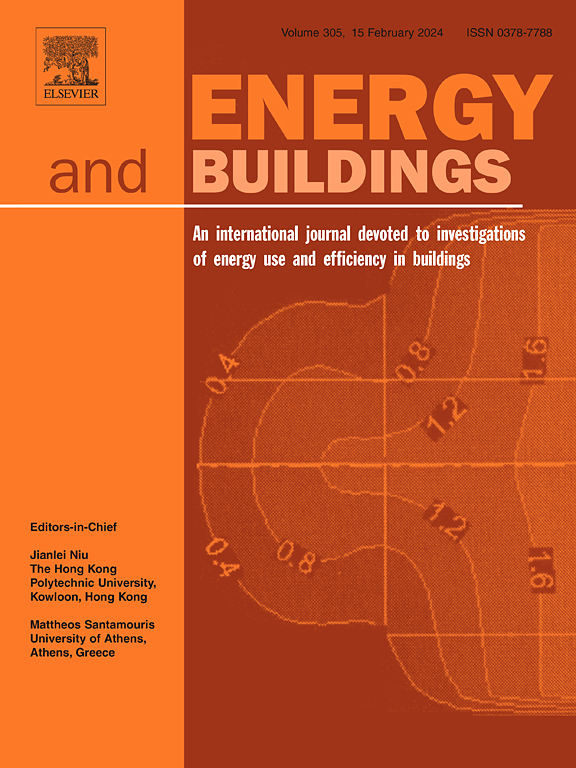Combining energy generation and radiant systems: Challenges and possibilities for plus energy buildings
IF 6.6
2区 工程技术
Q1 CONSTRUCTION & BUILDING TECHNOLOGY
引用次数: 0
Abstract
Radiant heating and cooling (RHC) systems are being more widely adopted considering the well-known technical advantages: increased thermal comfort, space saving, and reduced energy use. Since the building sector is currently one of the largest consumers of fossil fuels, many directives and regulations have been enacted to address the intense concern about energy use for space conditioning.
Even though radiant systems are considered as an energy efficient technology for building heating and cooling, more effort is needed to fulfil the zero energy requirements outlined by recent standards and directives. Renewable Energy Sources (RES) are an effective solution to avoid using finite fossil fuels and related geopolitical issues enhanced by the recent world conflicts. Despite being primarily intermittent and subject to economic and regional constraints, RES offer suitable temperature levels to supply low temperature heating and high temperature cooling operation, a major advantage of RHC system.
Although a limited number of studies directly report energy savings or CO2 emission reduction as the main outcomes of the research related to this combination, valuable insights have been obtained for the present review. Primary energy can decrease between 40% and 80% with different integration of RHC, photovoltaic, heat pumps and district heating. TABS can lead to load shifting up to 100%, allowing an increased self −consumption of renewable energy.
This paper provides evidence on whether coupling radiant systems with renewables is a promising strategy for achieving nearly-zero annual energy balances in building stocks. It investigates recent trends, limitations and potential to support decarbonization goals.
能源生产与辐射系统相结合:加能源建筑的挑战与可能性
辐热供暖和制冷(RHC)系统具有众所周知的技术优势:提高热舒适度、节省空间和减少能源消耗,因此正在被越来越广泛地采用。尽管辐热系统被认为是建筑供暖和制冷的节能技术,但要达到最新标准和指令中规定的零能耗要求,还需要付出更多努力。可再生能源(RES)是避免使用有限化石燃料和避免因近期世界冲突而加剧的相关地缘政治问题的有效解决方案。尽管可再生能源主要是间歇性的,并受到经济和地区的限制,但可再生能源可提供适当的温度水平,以提供低温加热和高温冷却操作,这是 RHC 系统的一个主要优势。通过将 RHC、光伏、热泵和区域供热进行不同程度的整合,一次能源可减少 40% 至 80%。本文提供了证据,说明辐射系统与可再生能源的结合是否是实现建筑存量近零年度能源平衡的可行策略。本文就辐射系统与可再生能源的耦合是否是在建筑中实现近零年度能源平衡的可行策略提供了证据,并调查了近期的趋势、局限性以及支持去碳化目标的潜力。
本文章由计算机程序翻译,如有差异,请以英文原文为准。
求助全文
约1分钟内获得全文
求助全文
来源期刊

Energy and Buildings
工程技术-工程:土木
CiteScore
12.70
自引率
11.90%
发文量
863
审稿时长
38 days
期刊介绍:
An international journal devoted to investigations of energy use and efficiency in buildings
Energy and Buildings is an international journal publishing articles with explicit links to energy use in buildings. The aim is to present new research results, and new proven practice aimed at reducing the energy needs of a building and improving indoor environment quality.
 求助内容:
求助内容: 应助结果提醒方式:
应助结果提醒方式:


